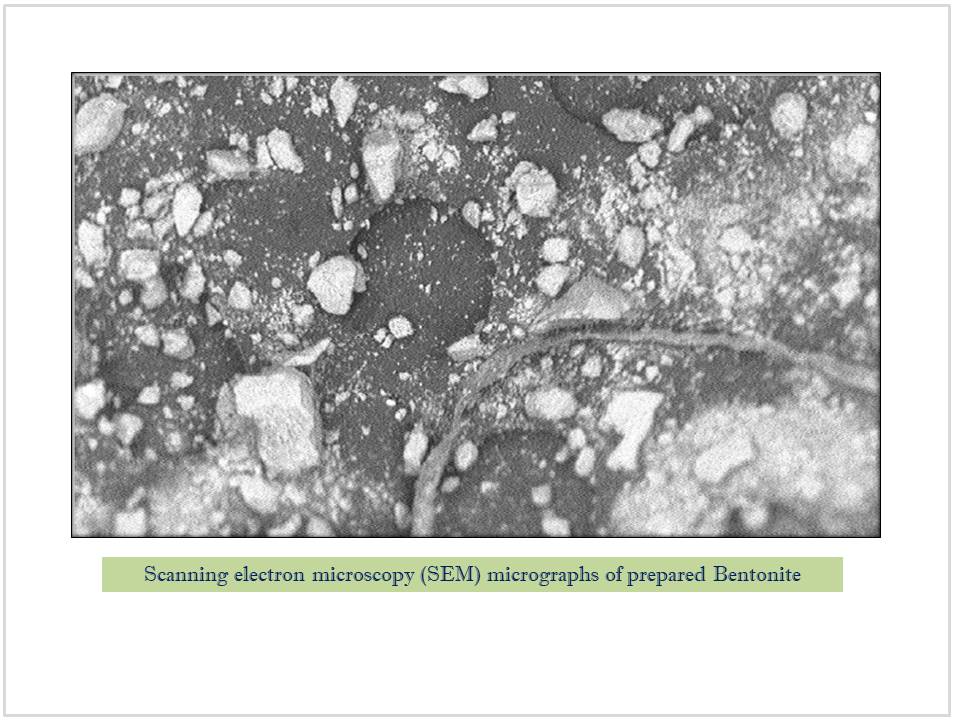Chemical Science & Engineering Research
Title
Preparation, Characterization and Antimicrobial Activity of Bentonite Clay Obtained from Sabon Kaura Deposit in Pindiga, Gombe State, Nigeria
Authors
Nasiru Yahaya Pindiga,*a Bashir Musab and Wilson Lamayi Danbaturea
aDepartment of Chemistry, Gombe State University Gombe, PMB 127, Gombe, Nigeria.
bDepartment of Chemical Science, Federal University of Kashere, Gombe, Gombe state, PMB 0182, 771103, Nigeria.
*Corresponding author E-mail address: npy500@gsu.edu.ng (Nasiru Yahaya Pindiga)
Article History
Publication details: Received: 27th July 2022; Revised: 11th August 2022; Accepted: 11th August 2022; Published: 22nd August 2022
Cite this article
Pindiga N. Y.; Musa B.; Danbature W. L. Preparation, Characterization and Antimicrobial Activity of Bentonite Clay Obtained from Sabon Kaura Deposit in Pindiga, Gombe State, Nigeria. Chem. Sci. Eng. Res., 2022, 4(10), 62-66.

Abstract
The Usual techniques such as X-ray diffraction (XRD), X-ray Flourescence (XRF), Fourier Transform Infrared spectral (FTIR) analysis, Scanning electron microscopy (SEM), and UV-visible were employed to study bentonite sample from Sabon Kaura Pindiga (Gombe State, Nigeria). From the XRF analysis, the most abundant oxides in the sample were Al2O3 and SiO2. The XRD analysis showed that the bentonite from Sabon Kaura region is composed of minerals such as kaolinite, quartz, montmorillonite, chlorite, clinochlore and illite. The average crystal size of the prepared bentonite as calculated by the Debye–Scherer formula was found to be 37.54 nm which indicates that the particles are in Nano size. Sabon Kaura (SK) sample shows a SEM image with a soft surface and more phase separation between the particles. From the FTIR spectra, the sample shows OH vibrational stretching picks in the Si-OH and Al-OH groups of the tetrahedral and octahedral sheets. Bands were also noticed by the stretching mode of Si–O. The result of the analysis by UV-visible shows that the SK bentonite spectrum was detected around 300 nm. The sample shows a good antibacterial and antifungal activity when tested against gram-positive and negative bacteria, Staphylococcus aureus, Mycobacterium and Bacillus subtilis Escherichia-coli, Helicobacter pylori and Klebsiella pneumonia. And also two fungi Aspergillus niger and Candida albicans, the Minimum inhibitory concentration (MIC) and Minimum bactericidal concentration (MBC) of the sample shows both bactericidal and bacteriostatic effects.
Keywords
Bentonite clay; Characterization; Antibacterial; MIC; MBC